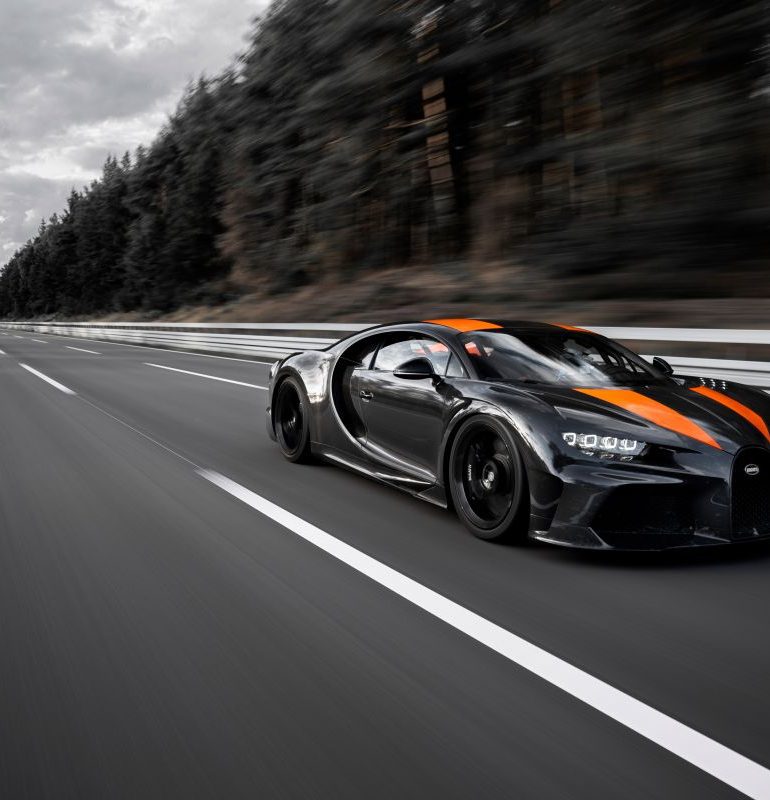Can a production car be classified as a masterpiece? And what can a company do when it produces one? And another one? And another one again? If you ask Bugatti, the answer is simple. It continues doing so. The latest addition to the celebrated manufacturer’s stable is the Bugatti Chiron. Another paramount car coming from Molsheim, being a variant of the Chiron is (unofficially) the current production car record speed holder. This record-breaking variant is none other than the Bugatti Chiron Super Sport 300+, a car worthy of examining.
Bugatti: A history of Masterpieces
The peerless Bugatti Chiron Super Sport comes from a legendary lineage spawning all the way back to the early 20th century, but before we move on to one of the last words from Molsheim-based carmaker, let’s get a quick round-up on what preceded the Chiron Super Sport.
There are a few names in the world less closely associated with excellence than Bugatti. In the pre-war era, the company led by Ettore Bugatti was a dominating force on the European racing circuits and in high circles. It was a matter of prestige to own a Bugatti and an even greater to race one.
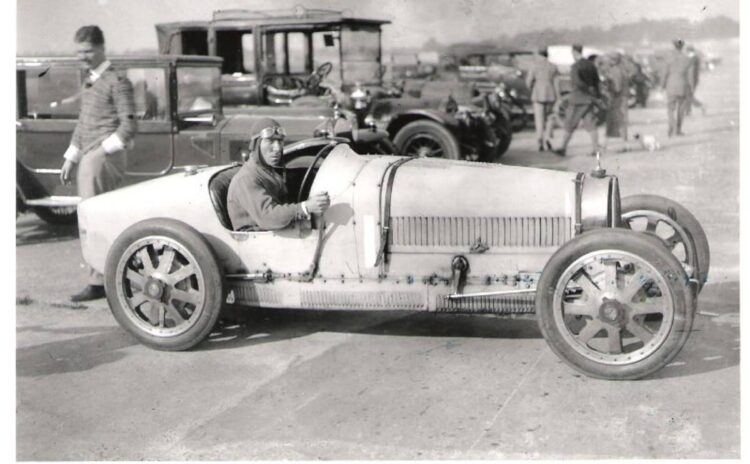
The original Bugatti era ended in 1947 after Ettore’s passing, but even during the dormant post-WW2 period, Bugatti was highly admired among top tier car collectors who hunted for Ettore’s most prized creations all over the world in a race to unearth rare and hidden jewels from Molsheim.
The company was briefly resurrected in 1987 as Bugatti Automobili S.p.A. under Romano Artioli. Sadly, the prodigious EB110 that rattled the supercar world wasn’t enough and Bugatti closed its doors once more but maintained dignity and Ettore’s strive for greatness.
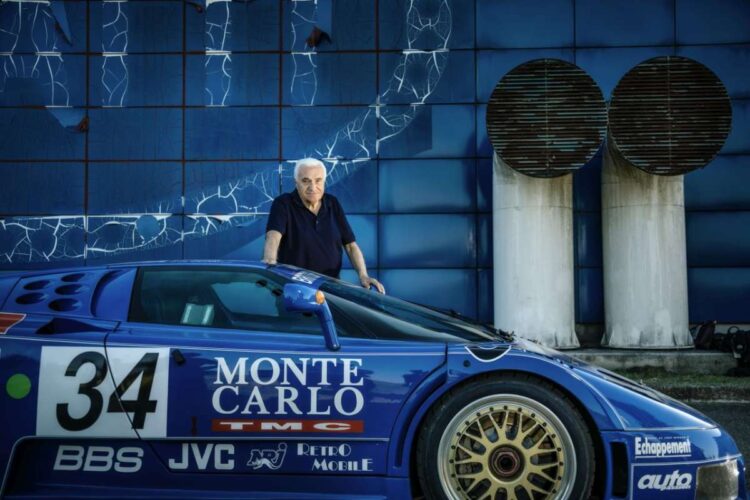
The second Bugatti resurrection came under Volkswagen AG which acquired the Bugatti trademark in 1998 and established Bugatti Automobiles S.A.S. in 1999. And oh, did they revamp it for the 21st century!
The Bugatti Veyron completely redefined the hypercar in a big style. It was the first production automobile to cross 400 km/h (248.5 MPH) and it did so in utmost luxury. Still, after years of productions and constant improvements, the aging Veyron was ready for an heir. The successor had a daunting task to live up to the standards of a glorious heritage, and it did.
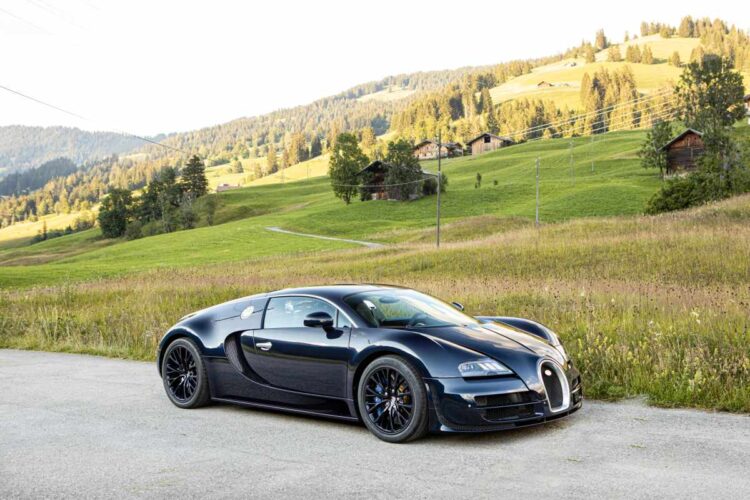
After years of development, the Chiron followed in 2016, setting another high benchmark in the automotive world. Three years later, the redefined Chiron Super Sport topped the 300 MPH mark, and to celebrate this achievement, Bugatti introduced the Chiron Super Sport 300+. Out of the aggregate run of 500 examples of the Chiron, the Chiron Super Sport 300+ was limited to just 30 exclusive examples costing approximately $3.9 million apiece.
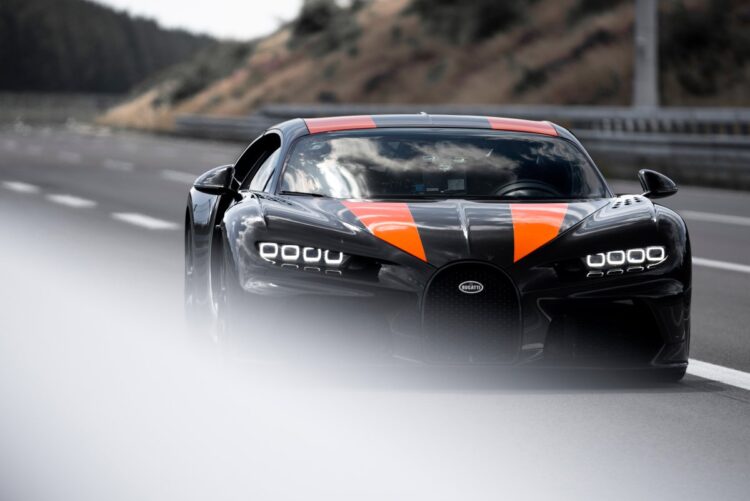
Chiron: The Name
Before the Chiron we know today, this name appeared twice in Bugatti’s history, the last time being on an Italdesign-imagined 1999 concept named 18/3 Chiron. This concept car was the last in a line of three cars Volkswagen commissioned to announce the new acquisition and reinvigorate interest in the exclusive brand. The concept was powered by a W18 engine consisting of three six-cylinder banks and some visual cues were later carried over to the Veyron.
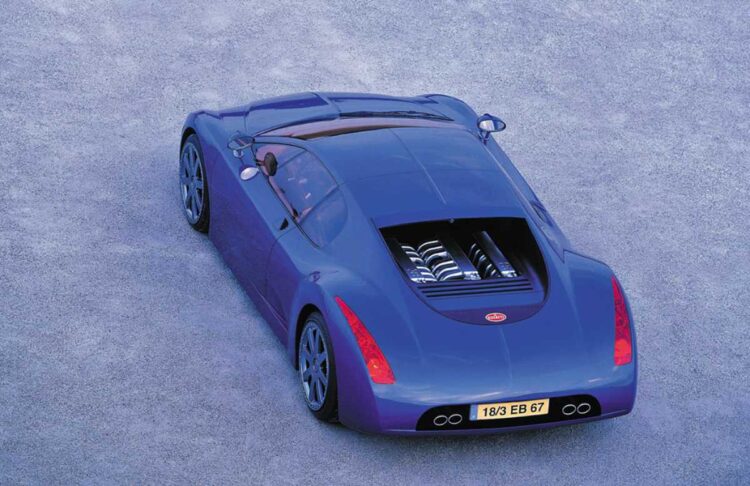
In addition to being a spectacular design showcase, the 18/3 Chiron was also a tribute to the famed Equipe Bugatti driver, Louis Chiron.
The Monegasque ace was one of the most prolific drivers in the era between two world wars and is still the sole driver from Monaco who successfully was victorious in his home Grand Prix event in 1931.
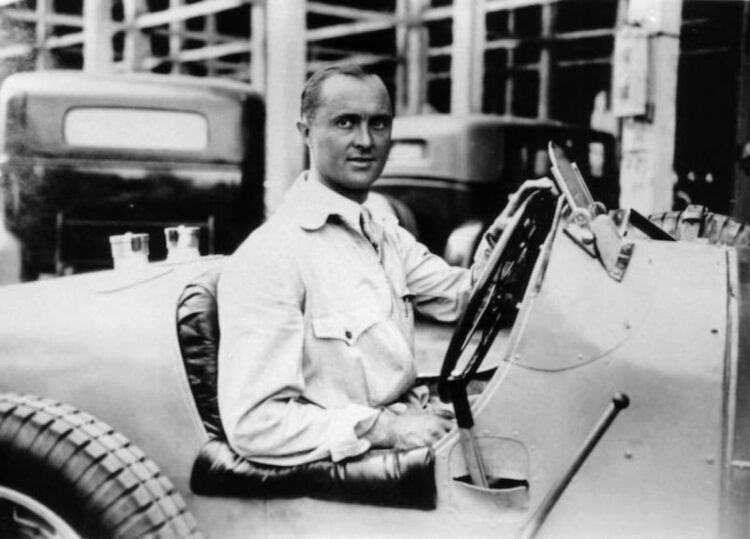
After his illustrious racing career, Chiron was an important figure in organizing the Monaco Grand Prix and as a tribute to his tenure at Equipe Bugatti, the 1999 concept and the production hypercar were named after him.
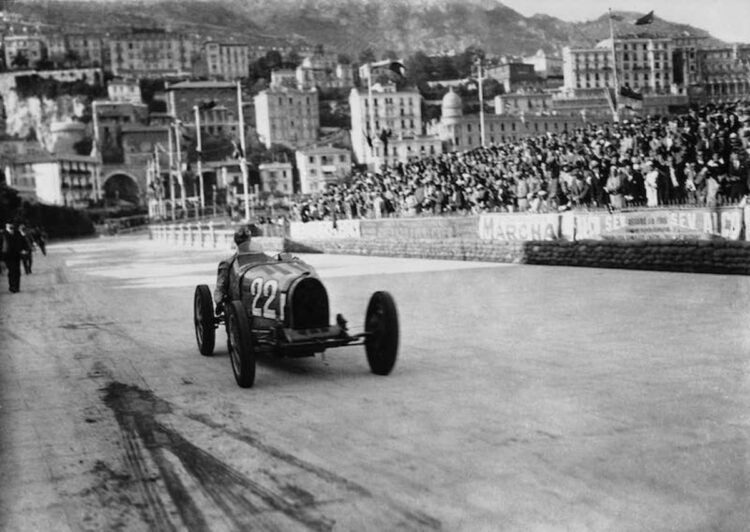
Bugatti Chiron Top Speed Run
Upon creation, the Bugatti Chiron had its speed limiter set to 261 MPH. Although impressive by all standards, this number was still shy of the 300 MPH mark. Bugatti had to reclaim its prestigious top spot, so the goal was set and the preparations could commence.
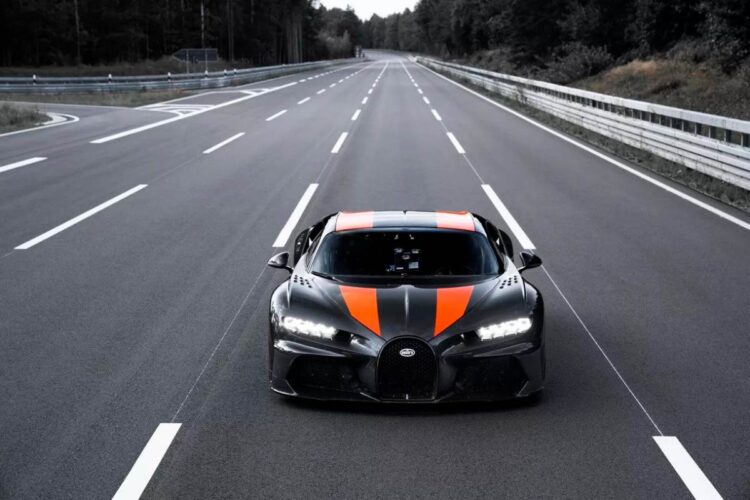
The fateful run happened on August 2nd 2019 at the Ehra-Lessien test track in Germany where the black-on-orange Bugatti Chiron Super Sport reached 304.773 MPH (490.484 km/h), breaking the 300 MPH barrier and opening a new chapter for both Bugatti and the whole automotive world.
The driver who tamed the Chiron Super Sport and achieved the TÜV-certified 300+ MPH run was Andy Wallace, Bugatti test driver and Le Mans champion.
Having already broken a speed record in 1998 when he got to 240 MPH in a McLaren F1, Wallace handled the Bugatti Chiron Super Sport with ease and brought it to its limits. Upon completing the record-breaking run, Wallace commented that the Chiron had been well-prepared and that he had felt safe even at speeds that high.
Later on, Wallace admitted that he made a jump at 227 MPH due to a slight elevation change on the track’s long straight. In regular conditions, most cars wouldn’t lift off, while some would have a much more tragic outcome, but Wallace and the Chiron got back on the ground and continued accelerating without losing balance at this dangerous speed.
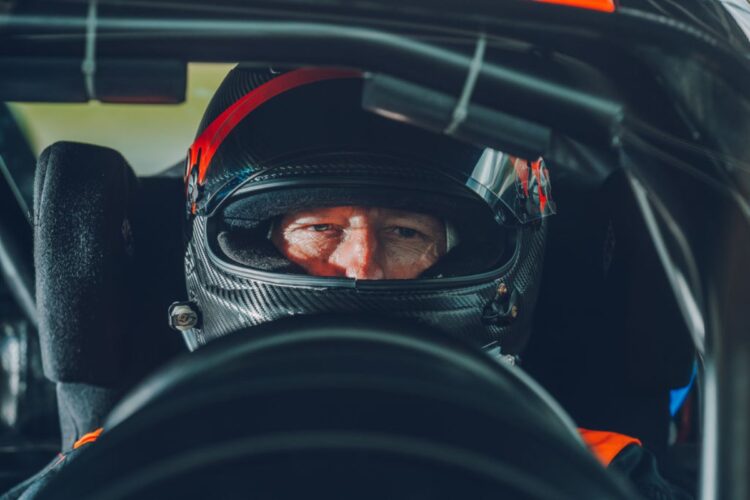
Now comes the controversial part. The current production car top speed record is still held by Koenigsegg Agera RS at 277.87 MPH and the reasons are two-fold. First of all, in order to be verified, the run had to be made in opposite directions of the same track to eliminate the positive and the negative effects of winds. Since the run was completed in one direction only, the record couldn’t stand.
Also, during the record run, the Chiron Super Sport was a pre-production prototype and Bugatti claims that the Bugatti Chiron Super Sport 300+ edition is visually and technically inspired by the Super Sport, yet not identical to the prototype.
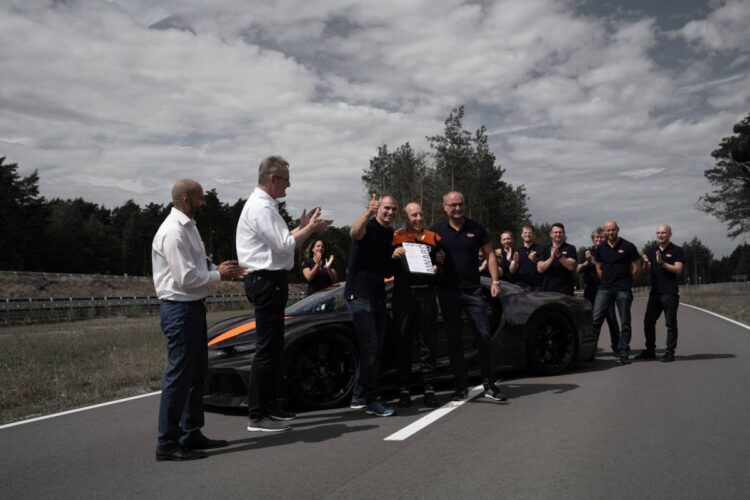
Still, breaking the 300 MPH barrier is an amazing feature, so how did Bugatti do it? Let’s start from the body, and then we’ll go to the beating heart of the Chiron Super Sport!
Body and Construction
The body of the Bugatti Chiron is a carbon fiber monocoque with an adaptive chassis, all wrapped in a body carrying the DNA of both recent and distant past.
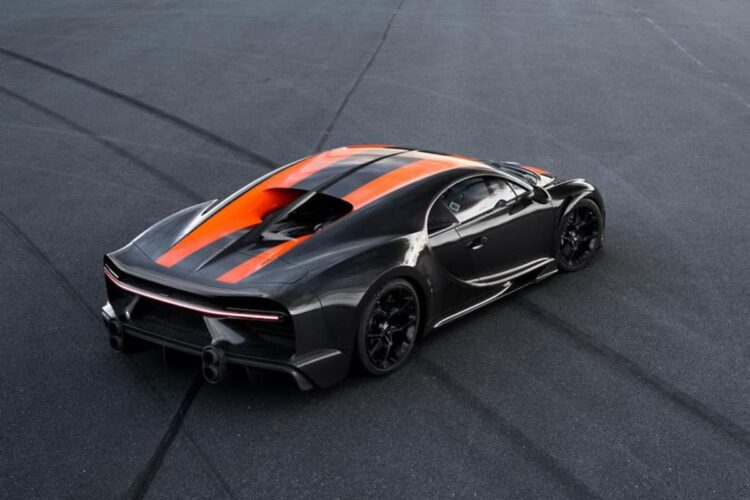
Bugatti Chiron designer, Achim Anscheidt, reimagined key elements from the Veyron, making the famous silhouette more contemporary, proceeding to add subtle hints of the famed Type 57.
Each body panel is crafted in high quality carbon fiber in order to keep the car as light as possible, which was a heroic task since the Chiron still weighs close to 4,400 lb despite using ultra lightweight materials throughout the car. For example, the monocoque and the engine compartment are held together by a total of 14 titanium bolts, each weighing just 1.2 oz, but the monstrous engine still weighs 1,384 lb even with all the efforts to make it lighter.
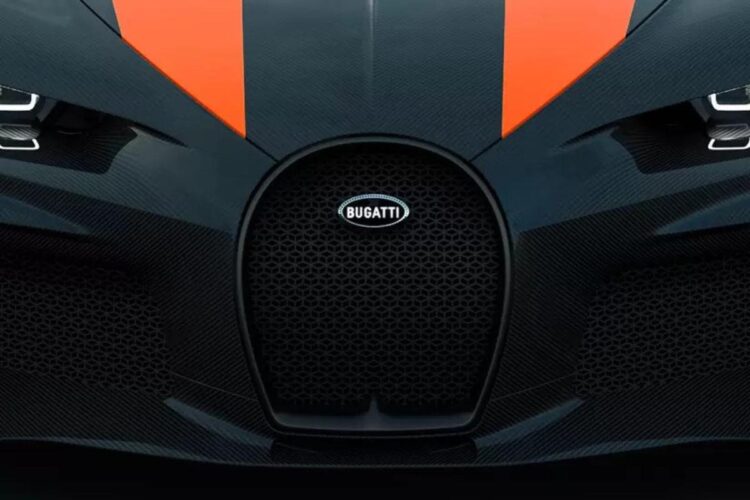
To achieve and top the 300 MPH mark, the engineers had to rework the body of the Chiron and adapt it for its ultimate goal. At certain speeds, brute power alone becomes futile and aerodynamics take over, so the Chiron went through a thorough overhaul to become the famed Super Sport.
The record-breaking Bugatti Chiron Super Sport has been in the making since early 2019. Designers and engineers at Bugatti closely collaborated with Dallara, a company renowned for chassis and aerodynamics development. The Italians provided vital know-how on chassis stiffness and aerodynamic tweaks needed to handle such speeds and battle with air resistance and exterior designer Frank Heyl was there to modify the body of the car as per Dallara’s inputs.
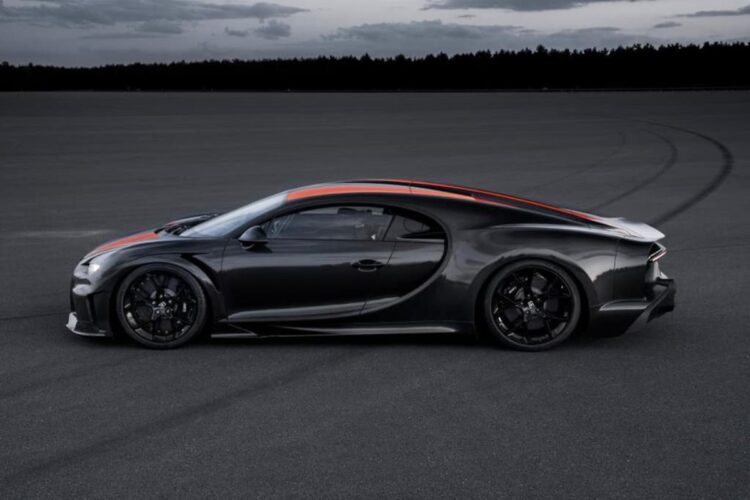
The two main hurdles Bugatti had to overcome were lift and drag. The Chiron Super Sport had to be glued to the proving track without compromising its aerodynamic abilities and that’s exactly why the company turned to Dallara’s engineering services once again.
As a result, the Bugatti Chiron Super Sport has an aerodynamic tail and is whole ten inches longer than the standard Chiron. The elongated silhouette provided the car with aerodynamic stability essential for keeping the car firmly gripping the road as the velocity increases.
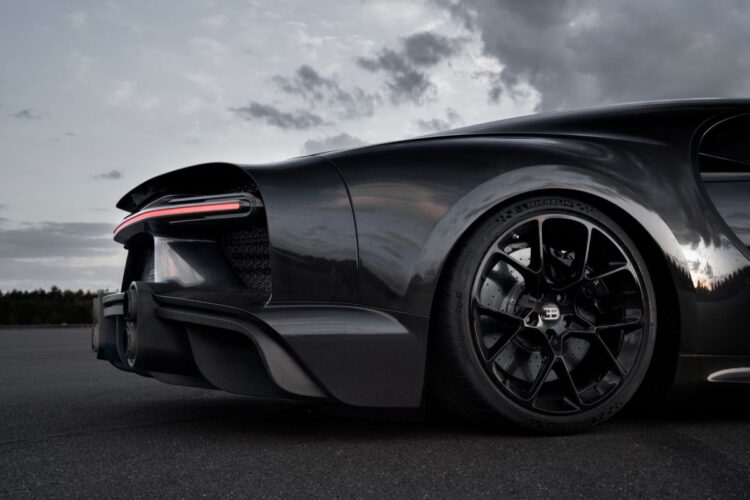
The so-called Longtail is a feature seen primarily on race cars, but some blisteringly fast road cars such as Jaguar XJ220, Maserati MC12 or the contemporary McLaren Speedtail also benefited from this construction principle which allows the laminar airflow to pass over the vehicle for longer, thus reducing the aerodynamic stall. In the case of the Chiron Super Sport, the stall was reduced by over 40 percent compared to the regular-sized Chiron.
The front end got massive inlets to help with both airflow and cooling, because handling excess heat was an equally important task. The sucked-in air dissipates through outlets on the wheel arch and outlets directly behind the front wheels disperse excess pressure from the wheel arch, creating negative lift and reducing the drag. Moreover, the Air Curtains at the Super Sports’ front corners are there to guide excess pressure developing at the front air inlets towards the sides, reducing the drag even more.
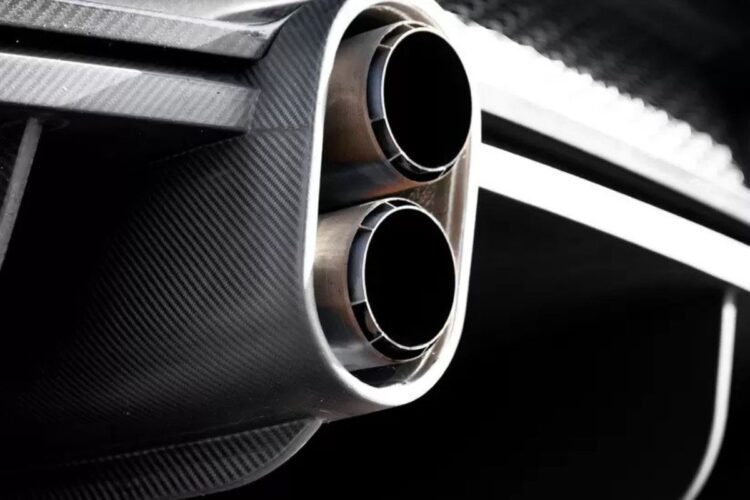
At the very back, even the exhaust tailpipes were reconfigured, with a central diffuser ensuring a sufficient amount of negative lift by itself, eliminating the need for the active wing. This way, the drag at the rear has been improved since the needed negative lift was generated without using wings or spoilers which would just increase drag.
With no need for complex mechanical wings, the Bugatti Chiron Super Sport lost even more weight. To this day, Bugatti is secretive about the weight of this record-breaking car, but the guess is it weighs considerably less than the normal Chiron, if there’s any such thing as the normal Chiron at all.
In lieu with the record-breaking example, the body of the production Chiron Super Sport 300+ will be finished in naked carbon fiber with two longitudinal orange stripes. As a final touch, the horseshoe-shaped grille is adorned with sterling silver-on-black Bugatti ‘Macaron’ ornament.
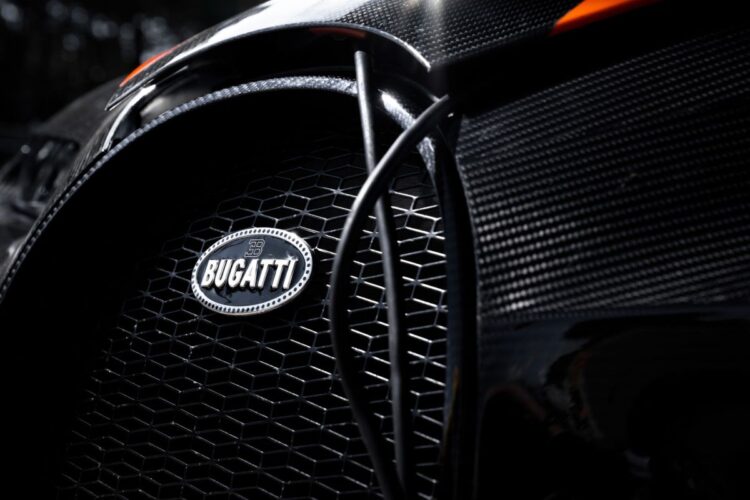
Bugatti offered the possibility of painting the car in any other color (Veyron’s Bleu Centenaire anyone?), but there’s a slim chance that any of 30 production cars will be sporting undercover exterior finish.
Engine of the Bugatti Chiron Super Sport 300+
A masterpiece of engineering, the quad-turbocharged 8.0-liter W16 from the Bugatti Veyron was carried over to the Chiron as well. In order to keep up with rapid development in the automotive industry, the engine was thoroughly upgraded and modernized.
The original Veyron boasted 1001 PS (987 hp), while the ultimate variant of the first 21st century Bugatti hypercar, the Bugatti Veyron 16.4 Super Sport had 1200 PS (1,184 hp).
In the Chiron, the numbers are even more impressive: 1500 PS (1,479 hp), a whole third more than the original power output of the same engine! To achieve this feature, Bugatti engineers revised virtually every component, improving power delivery, cooling and engine management.
The smooth power delivery came thanks to duplex fuel injection with 32 injectors and newly developed larger two-stage turbochargers, with the first pair spooling from the beginning of the rev range and the second pair joining in from 3800 RPM onwards.
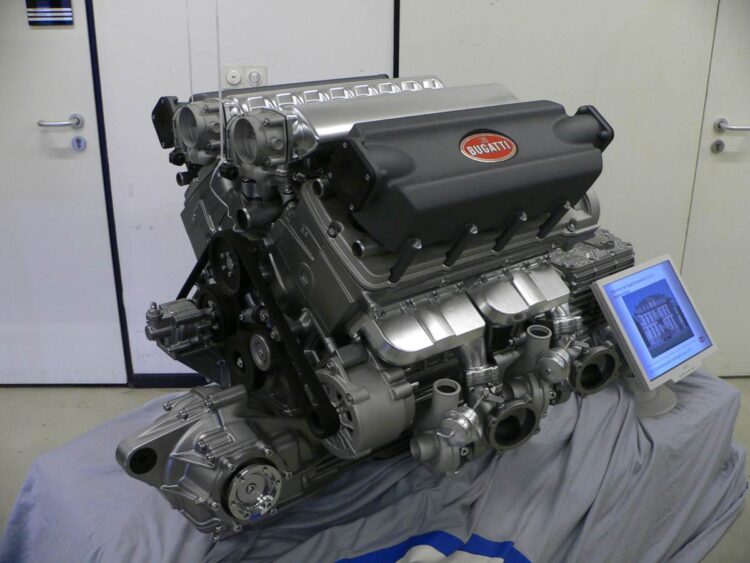
Each of these engines is sourced from VW’s base in Salzgitter after an 8-hour testing period and then prepared in Bugatti’s plant in Molsheim. There’s one transmission to choose from and it’s a 7-speed dual clutch automatic sending power to all four wheels via the updated Haldex all-wheel drive.
With the chassis improved and the aerodynamics set, Bugatti engineers were able to squeeze even more power from the W16, coming to a total of 1,600 hp, a whole hundred more than the Chiron! Due to its immense power and thundering noise, the reworked engine was nicknamed Thor.
In the Super Sport 300+ guise, the engine will retain the same power output, meaning that Bugatti can theoretically rerun the Chiron to 300 MPH again, this time as a production car.
Suspension
Another vital component needed for the Chiron Super Sport top speed record was the suspension setup. In addition to aerodynamic grip, the Super Sport had to produce sufficient mechanical grip.
The suspension of the Bugatti Chiron Super Sport was lowered and stiffened, which will probably not be the case with the Super Sport 300+ tribute. In the future, this could potentially be an uncrossable obstacle should anyone decide to match Wallace’s run.
Wheels, Tires and Brakes
In addition to Dallara, Bugatti found a partner in Michelin which provided the Chiron Super Sport with adequate tires able to withstand heat and pressure at the targeted velocity. The Chiron Super Sport was thus fitted with ultra-light magnesium wheels wrapped in Michelin Pilot Sport Cup 2 tires.
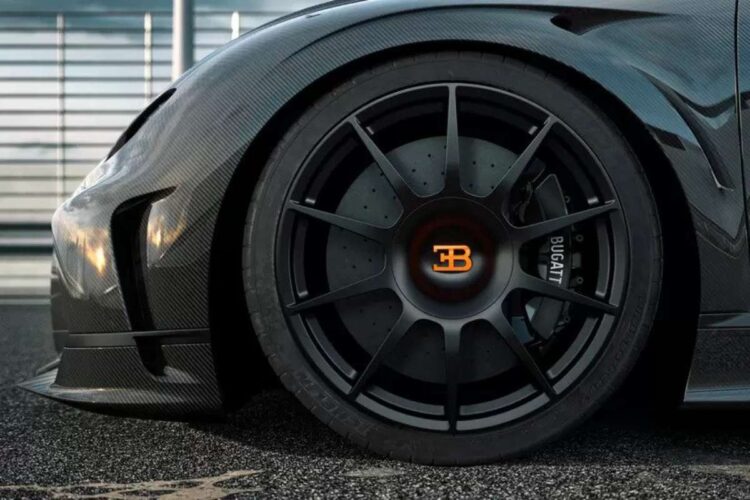
The Nocturno black magnesium wheels served two main purposes: reducing unsprung mass and enabling Bugatti engineers to fit larger brakes. At speeds close to 300 MPH, stopping power has to be achieved with something more than just technology.
That’s why the Chiron Super Sport got massive carbon ceramic brake rotors made from carbon silicon carbide with eight-piston aluminum calipers in the front and six-piston calipers in the back gripping the discs tightly when the driver hits the brake pedal. The caliper technology was borrowed from the race tracks and utilizes titanium pistons of different diameters ensuring even pressure distribution on the disc.
Bugatti Chiron Super Sport 300+ Interior
Being a production prototype, the Bugatti Chiron Super Sport driven by Andy Wallace was strapped in a single seat with five-point seat belt, telemetry gear and cameras in place of the co-driver’s bucket and a mandatory roll cage.
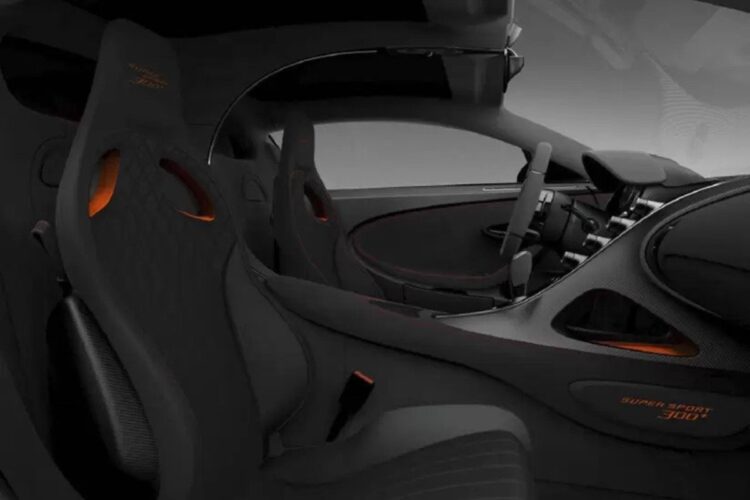
On the other hand, the limited-run Bugatti Chiron Super Sport 300+ looks a bit different. The black-on-orange theme of the record-topping car continues inside as well, with exposed Jet Black carbon fiber and Jet Orange accents.
In case the driver ever forgets they’re entering a Bugatti Chiron Super Sport 300+, there are illuminated greetings as well as Jet Orange embroidery on the center console and the headrests.
The Alcantara seats are finished in Beluga Black and the moody theme continues on the Beluga Black center line and the rear-view mirror.
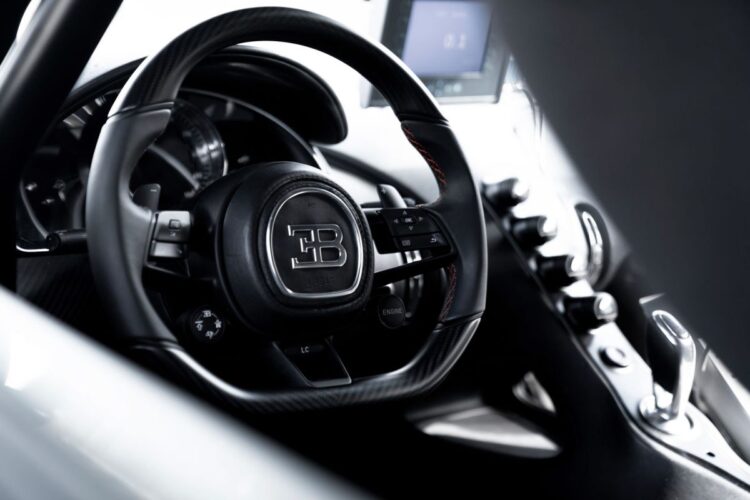
Chiron Super Sport 300+ Privileges
Once the fortunate thirty get their special black-on-orange Chirons delivered in mid-2021, they’ll face certain privileges in more than a few ways.
Bugatti Chiron Super Sport 300+ ownership comes with more than just billionaire-grade bragging rights: the company offers full access to the Ehra-Lessien track alongside a team of engineers helping set the car to fit current weather conditions.
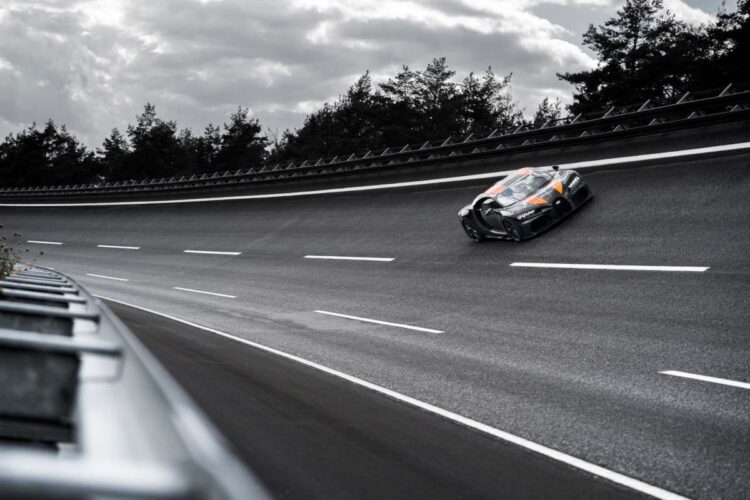
Does that mean that the Chiron Super Sport 300+ can match the 304.773 MPH run of the pre-production prototype car? It’s up to us to see, but in reality, it largely depends on weather conditions, the readiness of the owner to push the car to its very limits in Top Speed mode, and the element of fortune which always needs to be considered.
A production car or not, Bugatti Chiron Super Sport 300+ is an engineering masterpiece combining brutality and sophistication into one balanced, hyper capable mechanical entity.
Certainly, the Chiron Super Sport will for long be a subject of talk about millions of dollars, thousands of horsepower and hundreds of miles per hour, but it should primarily be appreciated as a testimony of progress well worthy of Ettore’s name and legacy.


